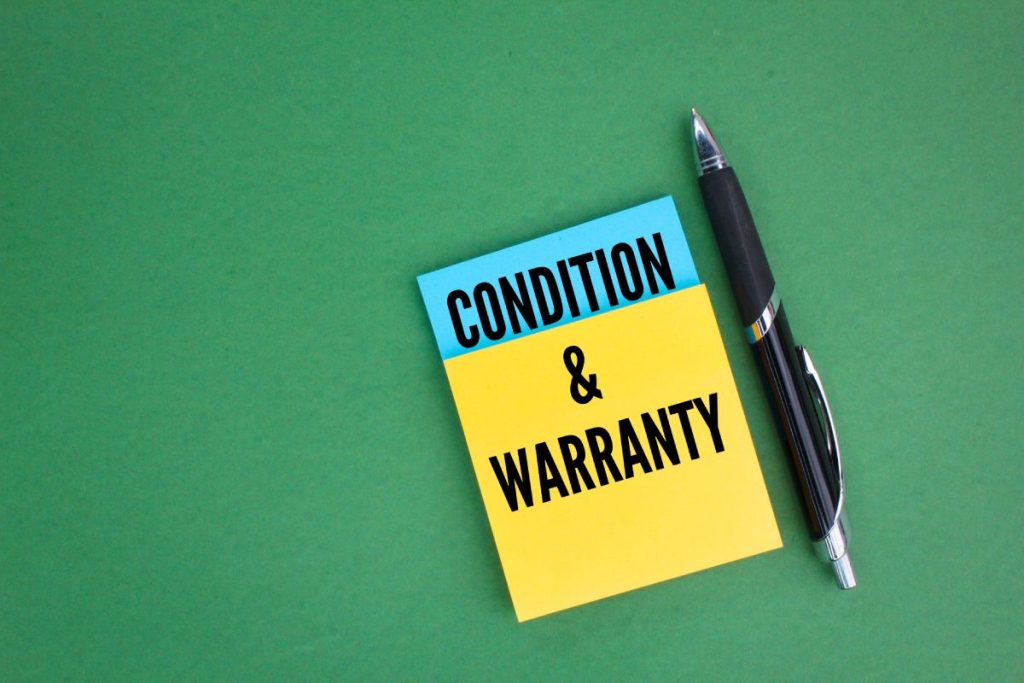Undoubtedly, home warranties can prove to be a valuable asset for homeowners. They serve as a safeguard against unforeseen expenses by covering the expenses associated with major home systems and appliance repairs and replacements.
Moreover, they offer the convenience of managing the entire repair process on your behalf. By comprehending the advantages of home warranties, homeowners can make an informed decision to safeguard their investment and alleviate concerns about unexpected repair expenditures.
However, akin to any other insurance policy, there are specific details you must fully grasp about home warranties, including coverage, costs, and the procedure for filing a claim. If you’re seeking guidance or information, read on!
What is a Home Warranty
A home warranty represents a contractual service agreement that extends coverage for the repair or replacement of major home systems and appliances. This service resembles an insurance policy but is specifically tailored to shield homeowners from unexpected financial burdens resulting from system malfunctions or equipment failures. Home warranties serve as a source of tranquillity by supplying financial security in the face of potentially expensive repairs. Homeowners frequently encounter unforeseen costs when issues arise with their heating, air conditioning, plumbing, electrical systems, or household appliances.

Moreover, home warranties deliver convenience and efficiency. Should a covered item experience a breakdown, homeowners need only get in touch with their warranty provider, who will then coordinate the dispatch of a qualified technician to assess the issue. This spares homeowners the trouble of researching and locating a dependable contractor on their own. Furthermore, the warranty provider manages the coordination and financial responsibility for essential repairs or replacements, streamlining the entire process.
Numerous companies present home warranty options and may offer coverage without a waiting period, which proves to be the preferred choice for many homeowners. Opting for a home warranty without a waiting period ensures immediate protection, allowing homeowners to address pre-existing issues or sudden equipment breakdowns right from the outset. It eradicates extended waiting times and furnishes the convenience and flexibility that homeowners often seek.
Examining the Expense of Home Warranties
According to Forbes, the expense associated with a home warranty can fluctuate based on several key factors. Factors such as the size and age of your residence can exert an influence on the cost of a home warranty. In general, larger homes equipped with a greater number of systems and appliances tend to incur a higher warranty fee in comparison to their smaller counterparts. Correspondingly, older homes featuring ageing systems and appliances may also bear a higher cost due to the heightened likelihood of repair or replacement needs.
Furthermore, the cost of the warranty is influenced by the coverage options you select. Basic warranty plans typically encompass the most fundamental systems and appliances, while more comprehensive plans extend coverage to a wider range of items. The more expansive the coverage, the greater the associated cost of the warranty.
Additionally, the geographical location can factor into the cost of a home warranty. Different regions exhibit distinct living costs and repair expenses. Areas characterized by elevated labour and material costs may consequently have higher home warranty pricing structures.

Understanding the Scope of Home Warranty Coverage
In general, a home warranty agreement typically extends coverage to encompass a majority of the primary systems and appliances within the home. Nevertheless, the specific coverage can vary depending on the chosen plan and the warranty provider. In terms of home systems, the warranty often includes protection for electrical systems, plumbing systems, and heating and air conditioning systems. As for household appliances, coverage may extend to items like the dishwasher, oven range, garbage disposal, and built-in microwaves.
Certain warranty providers offer plans that go beyond the basics, potentially covering items such as pools, spas, septic systems, and even doorbells. It is crucial to meticulously review your contract to gain a clear understanding of what falls under the warranty’s purview and what does not. It’s worth noting that most warranty providers will not assume responsibility for repairs or replacements if the damage results from inadequate maintenance, improper installation, or pre-existing conditions.
This underscores the importance of regularly tending to home maintenance and conducting inspections to ensure your home remains in good condition.
The Claim Procedure in Home Warranties
Typically, the process of filing a claim for home warranties follows a straightforward path. Upon identifying an issue within your home, such as the air conditioning failing to cool or the oven not heating, you initiate contact with your warranty provider.
Subsequently, the provider engages a service contractor who will reach out to you to arrange an appointment. The contractor undertakes an examination of the malfunctioning system or appliance to determine the root cause of the problem. If the issue falls within the scope of your warranty, the repair or replacement process commences. At this stage, you are obligated to cover the service fee.
It’s important to note that a claim may be declined if you are unable to furnish maintenance records or if the damage is ascribed to improper usage.

Transferring a Home Warranty to a New Owner
A significant number of home warranties offer the option of being transferred, allowing the coverage to seamlessly shift from one homeowner to another. This feature proves particularly advantageous for those with plans to sell their homes in the future.
When a homeowner decides to list their property for sale, the presence of a transferrable home warranty can become a compelling selling point. It furnishes potential buyers with a sense of security, assuring them that they will be shielded from unexpected repair expenses concerning specific systems and appliances in their new residence.
The process for transferring such a warranty is relatively straightforward. You simply need to get in touch with the warranty provider and provide them with the pertinent details of the new property owner. It’s worth noting that there may be a nominal transfer fee involved, typically ranging from $25 to $50.
Nevertheless, it’s important to keep in mind that not all warranty plans or providers permit this transfer option. Consequently, it’s advisable to ascertain this detail at the time of purchase if having a transferrable policy is a priority for you.
Conclusion
In summary, home warranties provide homeowners with financial protection and peace of mind for major home system and appliance repairs. The cost varies based on factors like home size and coverage options. These warranties typically cover systems such as electrical and plumbing and appliances like dishwashers.
Claims involve reporting the issue, scheduling with a contractor, and possibly paying a service fee. Transferring a home warranty can be a selling point when selling a home, but not all plans offer this option. Understanding these aspects is crucial for homeowners looking to safeguard their investments.
Follow Aviewfromthehill.com.au for more interesting stories!











